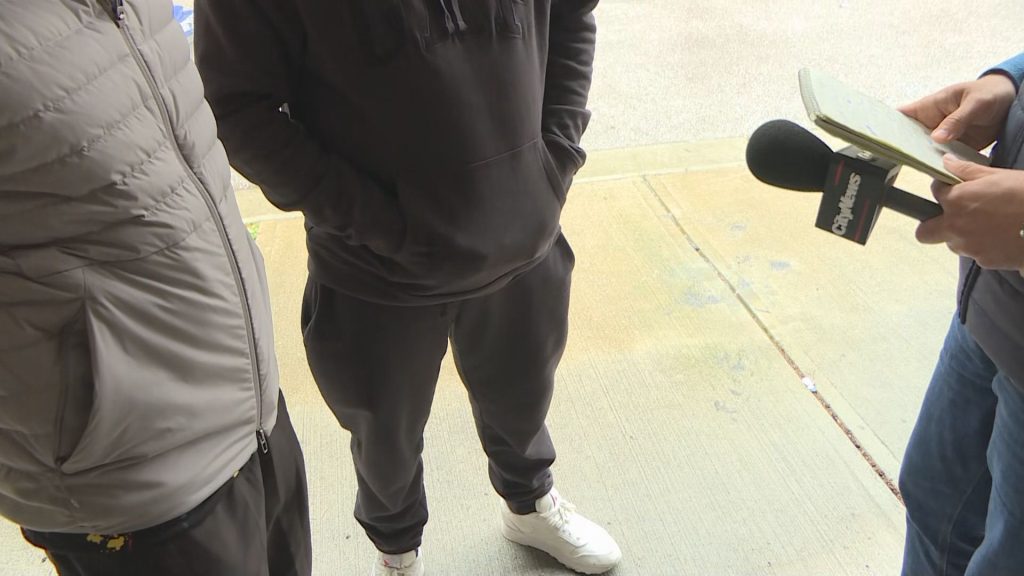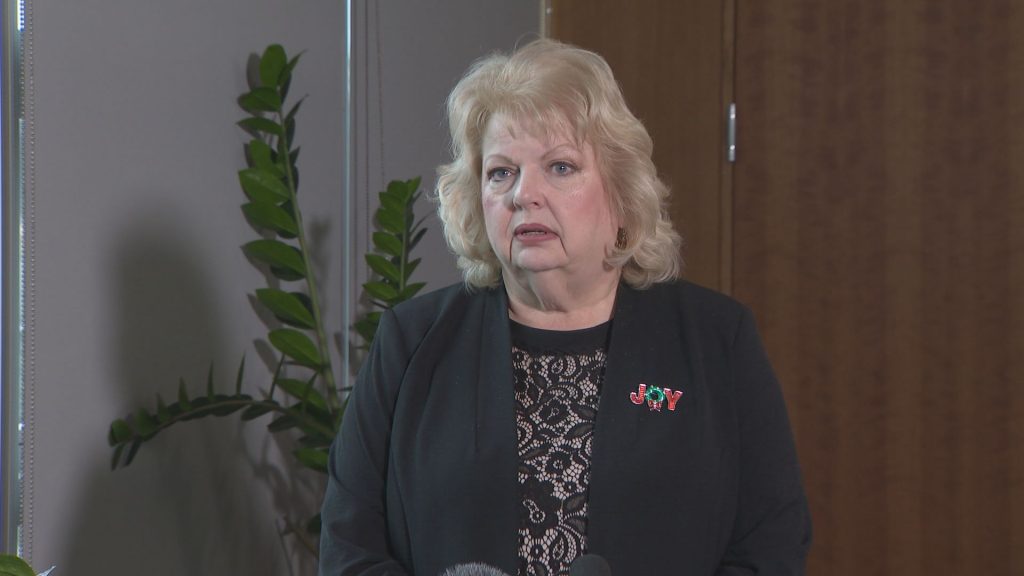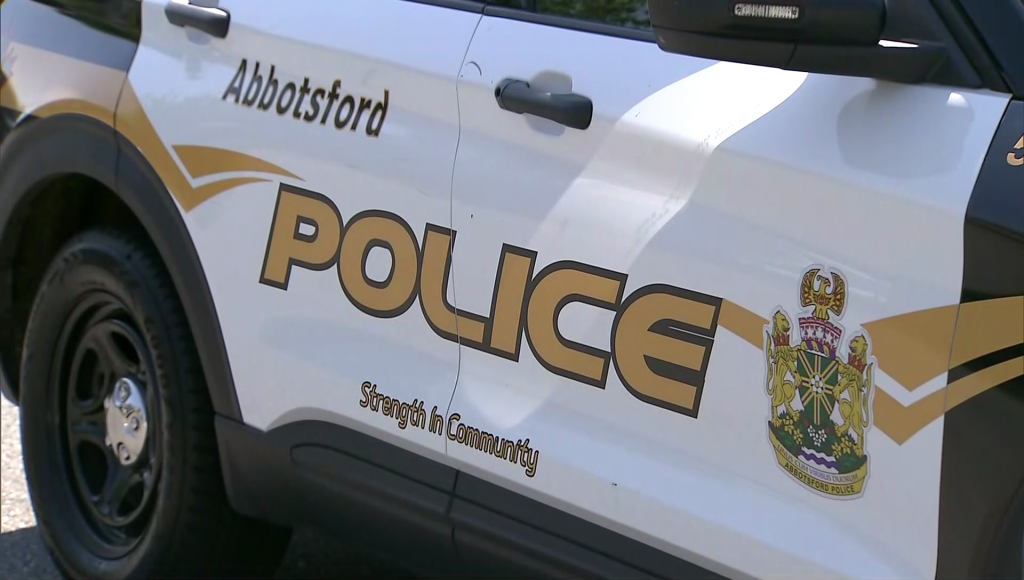Overlooked, under-analysed: Overdose reversals saving hundreds in B.C.’s opioid crisis
Posted June 10, 2021 4:36 pm.
Last Updated April 24, 2023 11:33 am.
Gilliana Soto has lost so many loved ones to the opioid crisis. She almost lost herself, too. Her first and last overdose was enough to make her realize she needed to change.
“It was like a light switch. It was like, I was losing my kids … I’m still trying to repair the damage that I did. I was lucky enough to get out of it,” she said.
Month after month, the public is informed of the latest number of overdose deaths in B.C. But the number of overdose reversals, or the people saved and still affected by the opioid crisis, is not widely shared.
As a recovering drug user and program manager for Atira’s overdose prevention sites, SisterSquare and SisterSpace, Soto uses her experiences to support other women going through similar struggles.
While Soto feels lucky to not be another number in B.C.’s overdose death statistics, she is part of a different statistic that paints an entirely different picture of the opioid crisis.
https://twitter.com/jajawoot/status/1392228631338909696
The BC Centre for Disease Control (BCCDC) estimates there are 1,000 to 2,000 overdose reversals per month. An overdose reversal is the process of saving people from dying of an overdose through preventative measures, most often with the medication Naloxone, which can stop the effects of opioids.
While overdose reversal numbers have been available online for a number of years, they aren’t often highlighted by the province or journalists.
As one of many people saved through an overdose reversal, Soto hopes that awareness will help reduce public stigma and start solving issues at the root of the opioid crisis. But the exact number of overdose reversals in a given month is variable, as reversals happening outside in the community often go unreported.
No one knows this better than Dr. Jade Boyd, a research scientist at the BC Centre for Substance Use (BCCSU), who has witnessed many reversals in her time researching and interviewing drug users and frontline workers in Vancouver’s Downtown Eastside.
“The numbers are very high. For different populations, those more marginalized in the Downtown Eastside have very high overdose rates. Those are then overdose reversal rates, and most of those are not occurring only in overdose prevention sites. There’s many unaccounted for that are going on [outside in communities] all the time,” she said.
So critical to point out that the main response to the overdose crisis has resulted in more overdose reversals in BC. Obviously an important outcome but the sad truth remains – the chance of buying deadly mystery drugs today is about the same as in 2016. #SafeSupply https://t.co/SinyxCGTrY
— Dr Mark Tyndall (@DrMtyndall) December 6, 2019
Current reversal estimates are based on information recorded by overdose prevention sites (OPS), paramedics and hospitals, and on the distribution and usage of take-home Naloxone (THN) kits.
THN kits are the province’s solution to save lives by making overdose reversal training and medication readily available. Since the program began in 2012, there have been over 96,000 lives reportedly saved with Naloxone intervention.
“Non-fatal overdoses are happening more often than people realize … It’s a bigger issue. We can see that already with the astronomical amount of fatal overdoses, that people are dying,” said Boyd.
Missing pieces of the opioid crisis puzzle
Some frontline workers say current reversal data only looks at the lives saved through Naloxone intervention.
Reversals by other means are not officially recorded by OPS or district health authorities.
“I remember watching this one, where someone had passed out, and the support worker was rubbing their chest and talking to them, giving them a lot of stimulation and physical touch and conversation. It really did bring them back. I thought they were going to pass away, and it brought them back before the use of Naloxone, which is amazing and really, really heartwarming to see,” Boyd said.
Ummmmm I gave breaths and they survived, We need to remember that breaths are important when giving naloxone https://t.co/hUkyqbBXeY
— Kali Sedgemore (@kalismethy313) May 25, 2021
While Naloxone is necessary for the majority of overdoses, there are instances where gentler approaches can be used, according to Brittany Graham, program coordinator at the Vancouver Area Network of Drug Users OPS in the Downtown Eastside.
“It’s very common and the old school way of dealing with overdoses by walking a person around, trying to add stimulation. This is also very common when someone isn’t breathing,” she explained.
“Rubbing their sternum or under their nose with your knuckles, giving them a big lobster claw grip around their shoulders, or pinching under their arm near the elbow. That kind of jars people back into being awake.”
Related articles:
-
Naloxone a ‘band-aid’ response to B.C.’s toxic drug death crisis: advocates
-
‘Why would the numbers be lower?’: Advocate says B.C. toxic drug deaths will continue without gov’t action
-
B.C.’s overdose crisis claims 176 lives in April
Graham adds in less-serious overdose incidents, oxygen and stimulation of the senses is preferred over Naloxone.
“People don’t enjoy the experience of being stabbed with a needle of Naloxone. It’s not pleasant. Most people are pretty angry when they wake up from that, because it’s a shock to your system. So when there are alternative ways to reverse an overdose, usually people will try the other methods first. Because it’s a difficult experience to undergo,” she said.
Boyd has seen many of these unreported reversals firsthand. She believes current overdose reversal estimates are an inaccurate portrayal of the total overdoses happening in B.C..
“It’s really, I don’t want to say beautiful, because it’s a very scary moment. But seeing the level of care that is provided is awe-inspiring,” she said.
'Naloxone is Not Enough: Letters from the Heart of the Crisis' is a collection dedicated to those who have lost loved ones to the toxic drug crisis, written by @CDCofBC PEEP Consultation & Advisory Board and @thep2pproject team members: https://t.co/2oOtcp2Tl7 pic.twitter.com/rmmqX4guOj
— Toward the Heart (@towardtheheart) June 8, 2021
Reversals are the ‘band aid’ for toxic drug supplies, advocates say
Graham tells us these gentler methods are not as effective with increasing toxicity of illicit drugs, sometimes even making Naloxone ineffective.
“As more drugs get tainted — not just with fentanyl, which you need Naloxone to reverse the overdose — but also … benzodiazepines show up more and more. That knocks people out and their breathing becomes really laboured. In those scenarios, it doesn’t even work with Naloxone, so you have to send the person by ambulance to the hospital usually to get reversal medication,” she explained.
In extreme cases, more than one shot is required to bring someone back from an overdose.
Ronnie Grigg, founder and director of the Zero Block Society, notes this phenomenon is not included in overdose reversal data.
“There’s an unpredictability to how an opioid will react to Naloxone and so you have to administer multiple shots,” Grigg said.
“If on Monday overdoses took one shot, and then all of a sudden on Tuesday every overdose is requiring two or three shots, that’s a trend, right? That’s really important for the community to know that there is a batch of illicit drugs that is really intense or resistant.”
He says when the community becomes aware of an especially resistant batch of drugs being used, sites will change procedures to provide a faster response to overdoses.
“When things are crazy, we’ll preload a syringe with Naloxone,” Grigg said. “That’s a common practice in a lot of sites to have it ready. But we’ll double-load it, if things are super intense. We’ll load it with two shots, if there’s a trend in the community.”
“What the current medical version of #harmreduction has done is met the medical system where it’s at, not meeting the person where they are, and that’s why it continues to fail people.” – @guyfelicella dropping truth-bombs at #StigmaSummit
— Rachel Shuster, ????????ℕ,ℝℕ,ℂ????ℝℕ,ℂ????????ℙ,????????????????ℕ (@mynameisrachel) June 10, 2021
The stories behind the numbers
Boyd’s work is founded on the need to address the overwhelming stigma, discrimination, and inequality that lays at the foundation of the opioid crisis.
To her, overdose reversals numbers not only represent the total lives impacted by the crisis, but also the growing need for better policy in the fight against illicit drugs.
“It’s a profound discrimination that exists. You have all these people dying, and it’s not as big of an emergency as something like COVID-19. Which at times, I know it’s global, but at times the death toll is lower. Then you can really see the gap and how we treat some populations as second tier,” she said.
We’ll never end this overdose crisis if we don’t address its root causes: our racist, oppressive drug policies. If we don’t start there it’s just like bathing in the same dirty bath water. #EndBadDrugPolicies #harmreduction
— guyfelicella (@guyfelicella) June 4, 2021
With his 12 years of experience at the frontlines, Grigg has been involved in over a thousand overdose reversals and trained hundreds of people to use Naloxone.
He believes the numbers can highlight the challenges essential lived-experience workers face.
“From the perspective of celebrating the work that people are doing, [the number of overdose reversals] should be known and celebrated,” Grigg argued.
“These numbers would be the numbers of overdose deaths if we didn’t have active engagement with frontline harm reduction work. So that certainly needs to be acknowledged and celebrated and cared for. But it’s not.”
But Colin Ramsay, a recovered drug user and addictions counsellor at Last Door recovery facility, believes potential biases need to be eliminated before sharing information about overdose reversals. He feels an independent source must be involved if overdose reversal data is to be collected and shared with the general public.
OUR DRUG POLICIES ARE KILLING PEOPLE.
176 people died of a drug overdose in the month of April 2021. That's nearly 6 (5.9) people every single day. Egregious. How many more? pic.twitter.com/l6mm9N3iXo
— guyfelicella (@guyfelicella) June 1, 2021
Like Ramsay, Boyd is skeptical of whether change is possible.
“I’m not sure [non-fatal overdoses] are going to change people’s opinions. I certainly hope that it would turn an eye to the criticalness of how we should address drug prohibition right now and the state of our toxic drug supply. But I’m a little bit skeptical at the moment in how much it actually would do,” she said.
In spite of her doubts, Boyd feels the current situation in B.C. cannot be allowed to remain as it is. While not the best solution, overdose reversal data may be the first step forward in bringing about some change through public awareness.
“Ultimately, Naloxone is a band aid,” she said.
“We have to think about the drivers of the overdose crisis and examine how drug laws and the policies around that contribute to the overdose crisis. Also, just really supporting people with lived experience and the grassroots organizing that they’re doing because they’re ultimately supporting people in the community for all of us.”










